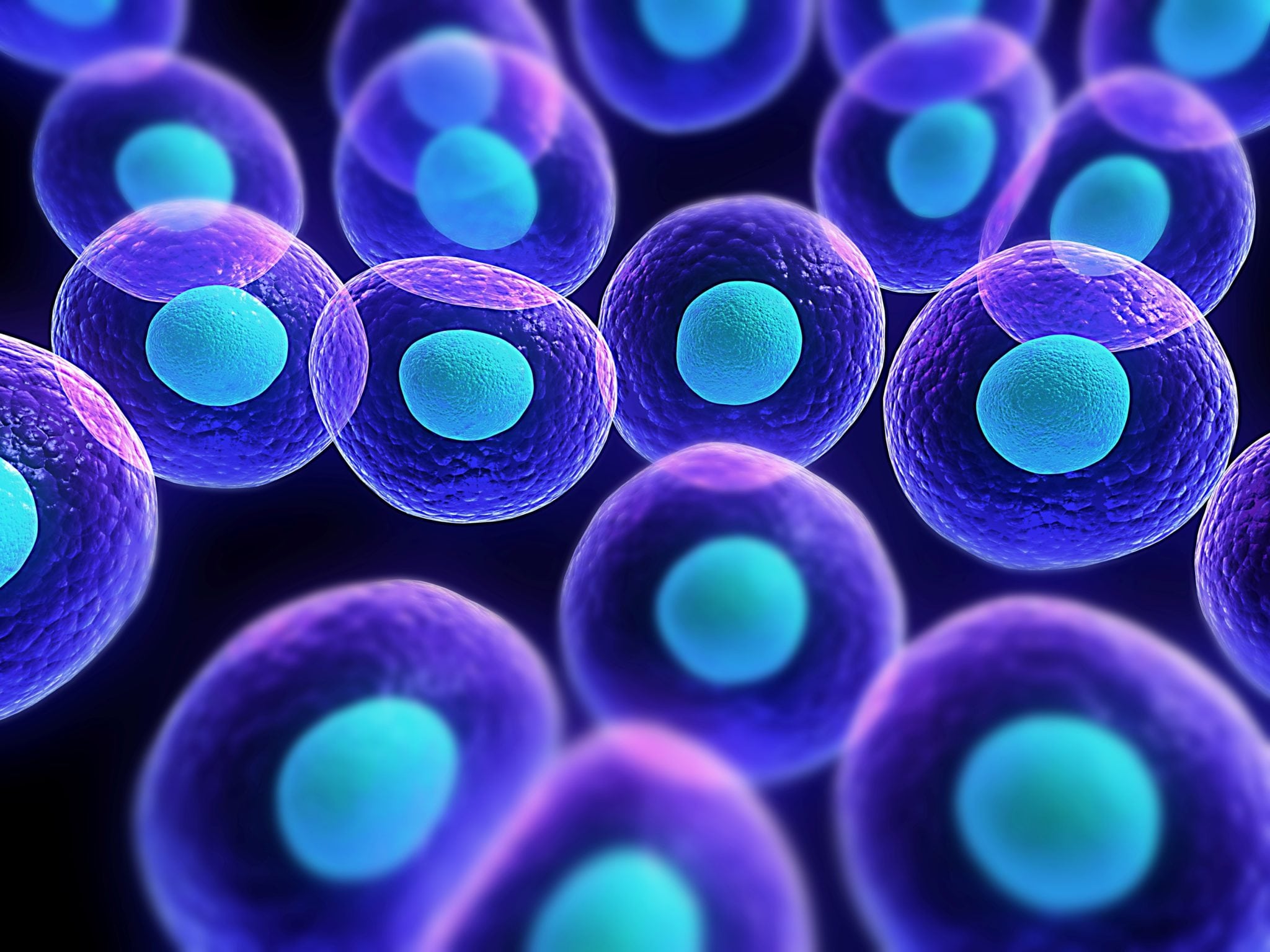So, what are prokaryotic and eukaryotic cells?
A cell is the smallest structural and functional unit of an organism. The most basic cell is made up of a nucleus (the part of the cell that controls all its functions), cytoplasm (the jellylike substance that surrounds the nucleus), organelles (smaller cell structures that perform a specific cell function), and a cell membrane (the wall through which materials pass in and out of the cell). There are two types of cells: prokaryotic and eukaryotic.
What Are Prokaryotes and Eukaryotes?
First of all, a prokaryote is a unicellular (one cell) organism which does not have a nucleus with a membrane or specialized organelles. They look like this:
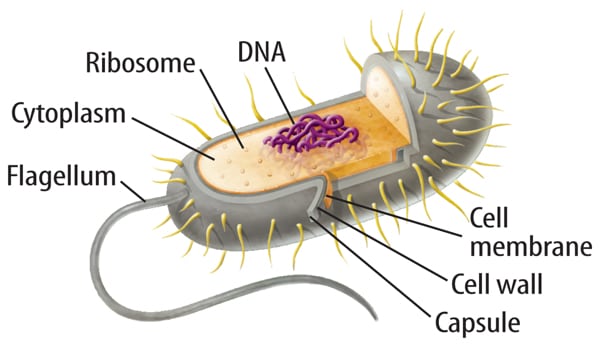
As you can see, this particular prokaryote has DNA without a nucleus, a cell membrane and a cell wall, ribosomes (organelles that synthesize proteins), cytoplasm to hold it all in place, and a flagellum that the cell uses to move.
A Eukaryote is a multi-cellular organism that has a nucleus with a membrane, and specialized organelles that each perform a specific function. This is what it looks like:
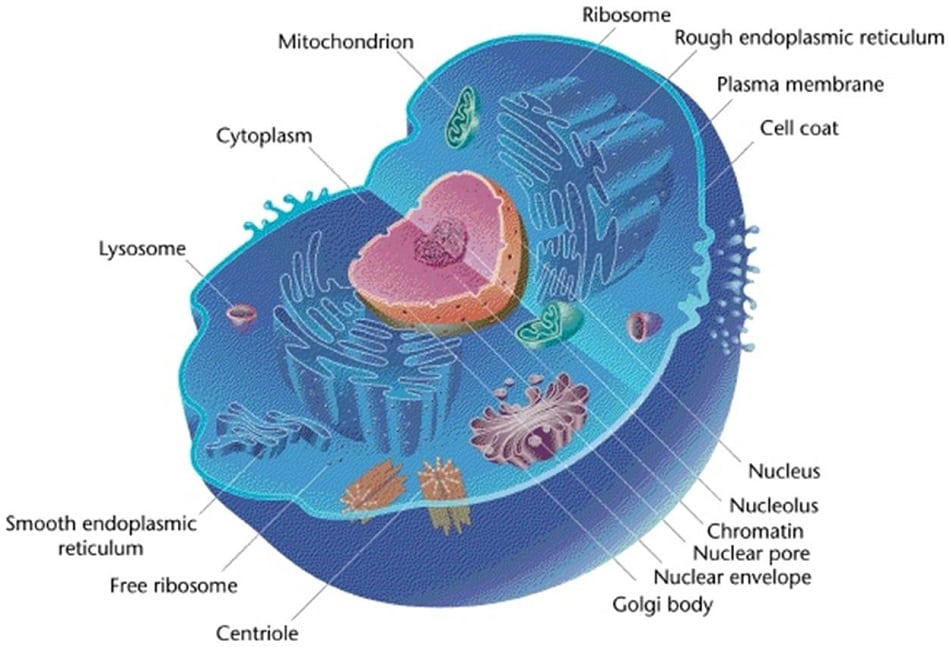
The eukaryotic cell is more complex than a eukaryotic cell. A membrane surrounds the nucleus. There are many different organelles in the cytoplasm that perform different functions. For example, the mitochondrion creates energy for the cell to use. The lysosome processes waste material. The rough endoplasmic reticulum is where many different types of proteins are processed and put together in processes called transcription and translation. Next, the smooth endoplasmic reticulum manufactures lipids and metabolizes sugars and other materials for the cell to use later. Ribosomes create proteins. The cell coat and cell membrane protect the cell and allow materials to pass in and out. All the cell’s genetic material, chromatin, is kept in the nucleus. As you can see, eukaryotic cells are much more complex compared to prokaryotes.
For more details about cells and the specific detailed function of each organelle within a cell, contact our tutors for biology homework help.
What is the difference between Prokaryotic and Eukaryotic cells?
There are quite a few differences between prokaryotic and eukaryotic cells, and both of them can be altered using CRISPR technology.
Eukaryotic cells usually include:
- A defined nucleus
- They have more than one chromosome
- A true membrane around the nucleus
- Are usually multicellular
- Handle genetic recombination through Meiosis and the fusion of gametes
- And include more complex organelles such as lysosomes, peroxisomes, microtubules, and two endoplasmic reticulums
In comparison, prokaryotic cells contain:
- DNA strands not contained in a nucleus
- One chromosome and plasmids to help with cell division
- No nuclear membrane
- Usually unicellular
- Genes recombine through cell division and binary fission
- No complex organelles other than ribosomes
What Is An Example of A Prokaryotic Cell?
Most bacteria and algae fall are prokaryotic cells. This includes the bacterium tuberculosis and E. coli, shown below. As you can see, flagella cover the cell body and enable movement.
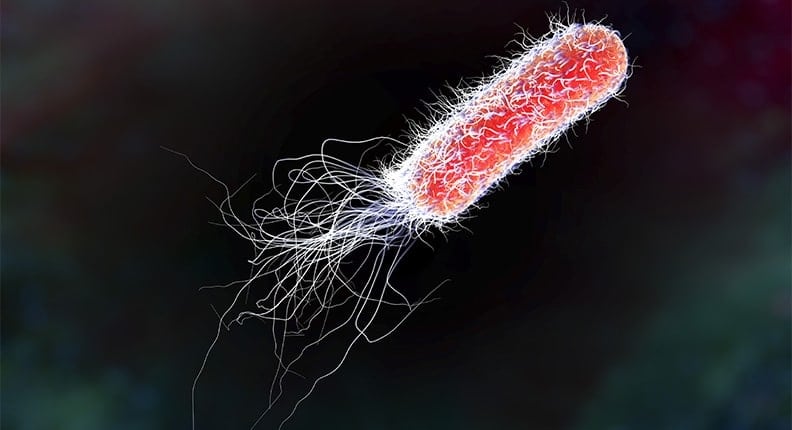
What Is An Example of A Eukaryotic Cell?
Eukaryotic cells include plant and animal cells. An animal cell is pictured below. Plant and animal cells are mostly similar with the exception of a strong cell wall and chloroplasts in plant cells.
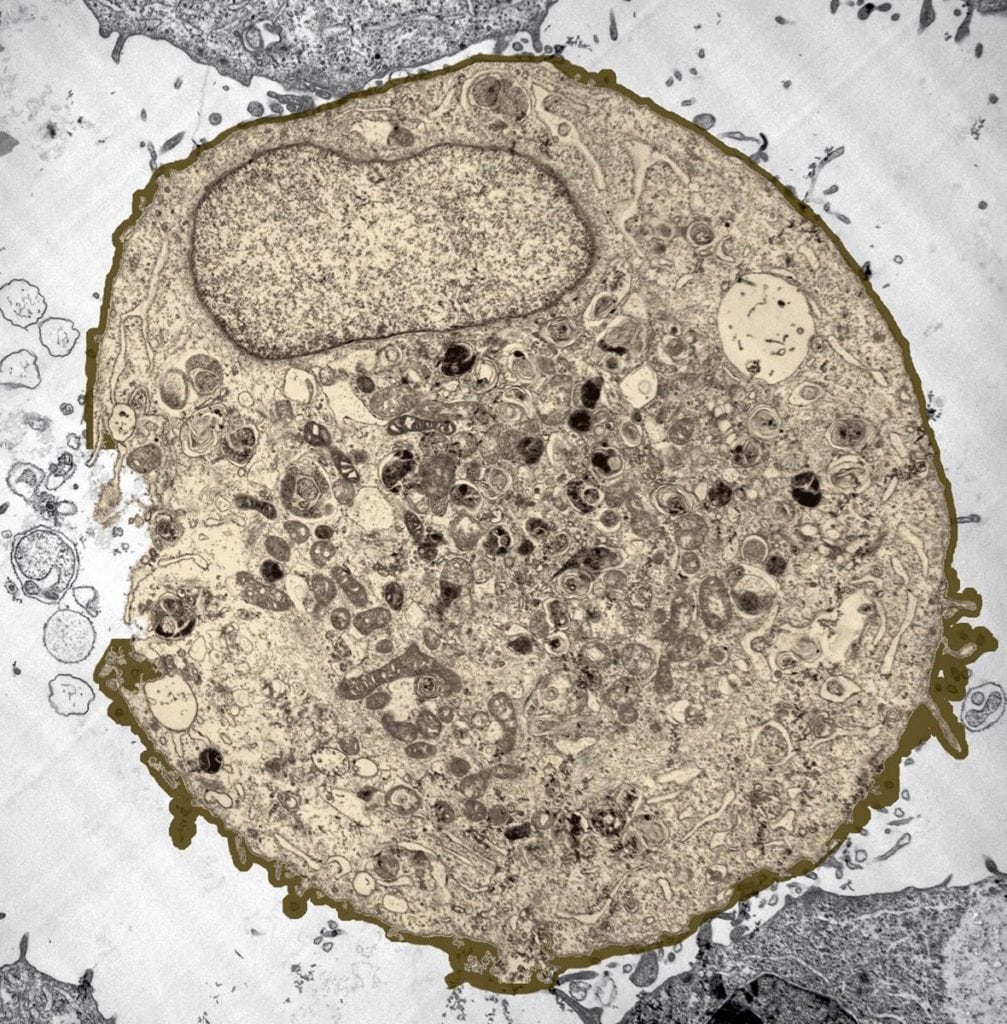
Review:
Eukaryotic cells have a nucleus filled with chromatin (genetic material), specialized organelles such as lysosomes, mitochondria, endoplasmic reticulums, ribosomes, and a cell wall. Then, their genetic material recombine through Meiosis and the fusion of gametes. Most eukaryotic cells belong to animals and plants. Prokaryotic cells contain DNA strands and ribosomes that are held in place with cytoplasm. Prokaryotes recombine their DNA through binary fission, a process where DNA is copied and split off into two new cells. In addition, many prokaryotic cells have flagellum, or long structures that help the cell move. Examples of prokaryotes include E. coli. and tuberculosis.
Visit StudyGate.com